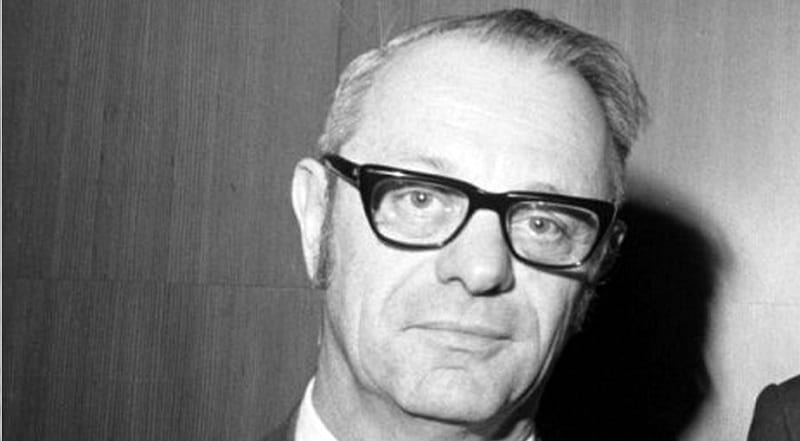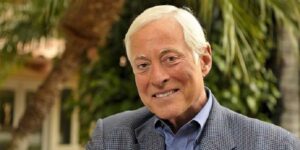Igor Ansoff biografie en model

Igor Ansoff (Harry Igor Ansoff, 1918- 2002) was een vooraanstaand Russisch Amerikaanse wetenschapper en als autoriteit op het gebied van strategie. Igor Ansoff staat bekend in de boeken als de vader van strategisch management en is wereldwijd bekend met zijn model, de Ansoff matrix, ook bekend als de Igor Ansoff Model.
Igor Ansoff biografie
De wetenschappelijke carrière van Igor Ansoff begon in 1937 toen hij na het afronden van High School ging studeren aan de universiteit Stevens Institute of Technology (SIT). Daar behaalde hij zijn MSc. graad in dynamica. Vervolgens startte Ansoff aan de Brown University zijn promotie onderzoek op het gebied van toegepaste wiskunde, in het bijzonder de theorie van Elasticiteit en Plasticiteit.
Na deze studie en onderzoeksprestaties trad Igor aan bij UCLA binnen het Senior Executive Program. Ansoff was een vooraanstaand professor en heeft 17 jaar lang veel onderzoek verricht op het gebied van strategisch management bij verschillende instituten.
Ansoff is wereldwijd bekend voor zijn onderzoek op drie specifieke gebieden, te weten: het concept van milieu-turbulentie, het voorwaardelijke strategisch succes-paradigma – een concept dat is gevalideerd door talloze proefschriften – en realtime strategisch management.
Igor Ansoff Model
Marketing- en MBA-studenten zijn veelal vertrouwd met zijn Ansoff matrix, een instrument dat Igor in het leven heeft geroepen om generieke strategieën voor de start van een bedrijf via bestaande of nieuwe producten, in bestaande of nieuwe markten te plotten.
Naast hoogleraarschap was Igor Ansoff ook adviseur en heeft hij tal van bedrijven zoals Philips, General Electric, IBM, Sterling en Westinghouse geadviseerd bij strategische management vraagstukken. Zijn werk werd zeer gewaardeerd met als gevolg dat hij verschillende prijzen ontving tijdens zijn carrière.
Inmiddels is er ook een prijs naar hem vernoemd, te weten de Igor Ansoff Award (opgezet in 1981).
In 2002 overleed Igor Ansoff aan complicaties van longontsteking in San Diego, Californië.
Bekende quotes
- “A natural companion to the competitive advantage is the synergy component of strategy. This requires that opportunities within the scope possess characteristics which will enhance synergy.”
- “The triplet of specifications – the product-market scope, the growth vector and the competitive advantage – describes the firm’s product-market path in the external environment.”
- “By searching out opportunities which match its strengths the firm can optimize the synergistic effects.”
- “This theory maintains that the objectives of the firm should be derived by balancing the conflicting claims of the various ‘stakeholders’ in the firm: managers, workers, stockholders, suppliers, vendors. The firm has a responsibility to all of these and must configure its objectives so as to give each a measure of satisfaction.”
Boeken en publicaties van Igor Ansoff et al.
- 2019. Societal strategy for the business firm. In Implenting Strategic Management (pp. 285-310). Palgrave Macmillan, Cham.
- 2018. Implanting strategic management. Springer.
- 2007. Strategic Management. Palgrave Macmillan Ltd.
- 2006. The secrets of strategic management: The Ansoffian approach. Ansoff Institute.
- 2004. Strategic management of technology. Technology Analysis & Strategic Management, 16(2), 275-291.
- 1993. Optimizing profitability in turbulent environments: A formula for strategic success, Journal: Long Range Planning, vol. 26, no. 5, pp. 11-23.
- 1994. Comment on Henry Mintzberg’s rethinking strategic planning.
- 1991. Critique of Henry Mintzberg’s, ‘The design school: Reconsidering the basic premises of strategic management’, Journal: Strategic Management Journal, vol. 12, no. 6, pp. 449-461.
- 1991. Strategic management in a historical perspective. International Review of Strategic Management, 2(1), 3-69.
- 1990. Implanting strategic management. New York: Prentice Hall.
- 1988. The new corporate strategy. Wiley.
- 1987. The emerging paradigm of strategic behavior. Strategic Management Journal, 8(6), 501-515.
- 1987. Strategic Management of Technology, Journal: IEEE Engineering Management Review, vol. 15, no. 3, pp. 2-13.
- 1986. Competitive strategy analysis on the personal computer, Journal of Business Strategy, vol. 6, no. 3, pp. 28-36.
- 1985. Conceptual underpinnings of systematic strategic management. European Journal of operational research, 19(1), 2-19.
- 1982. Strategic response in turbulent environments. Brussels: European Institute for Advanced Studies in Management.
- 1980. Strategic Management of Technology, Journal: Strategic Management Journal, vol. 1, no. 1, pp. 1-5.
- 1980. Strategic issue management. Strategic Management Journal, 1(2), 131-148.
- 1977. The changing shape of the strategic problem. European Institute for Advanced Studies in Management.
- 1977. State of practice in planning systems. Sloan Management Review, 18(2), 1-24.
- 1976. Strategic portfolio management. Journal of General Management, 4(1), 13-29.
- 1976. From Strategic Planning To Strategic Management. In International Conference on Strategic Management 1973: Vanderbilt University). Wiley.
- 1975. Managing Strategic Surprise by Response to Weak Signals. California management review, 18(2).
- 1975. Managing surprise and discontinuity: strategic response to weak signals. European Institute for Advanced Studies in Management.
- 1973. Toward a strategic theory of the firm. Business strategy. Great Britain: Penguin Books, 11-40.
- 1972. The concept of strategic management. Journal of Business Policy, 2(4), 2-7.
- 1971. A language for organization design: part I. Management science, 17(12), B-705.
- 1970. Corporate strategy: An analytic approach to business policy for growth and expansion. Penguin books.
- 1970. Does planning pay? The effect of planning on success of acquisitions in American firms, Journal: Long Range Planning, vol. 3, no. 2, pp. 2-7.
- 1969. Business strategy: selected readings (Vol. 72). Penguin books.
- 1968. An Appreciation of Industrial Dynamics, Journal: Management Science – Management, vol. 14, no. 7, pp. 383-397.
- 1967. Strategies for a technology-based business. Harvard business review, 45(6), 71-83.
- 1965. The firm of the future. Harvard Business Review, 43(5), 162-178.
- 1965. Corporate Strategy: An Analytical Approach to Business Policy for Growth and Expansion. McGraw-Hill.
- 1964. A Quasi-Analytic Approach to the Business Strategy Problem, Journal: Management Science – Management, vol. MT-4, no. 1, pp. 67-77.
- 1962. Merger objectives and organization structure. Review of Economics and Business, 2(S 49).
- 1958. A model for diversification. Management science, 4(4), 392-414.
- 1957. Strategies for diversification. Harvard business review, 35(5), 113-124.
Citatie voor dit artikel:
Van Vliet, V. (2010). Igor Ansoff. Retrieved [insert date] from Toolshero: https://www.toolshero.nl/bekende-auteurs/igor-ansoff/
Oorspronkelijke publicatiedatum: 24/02/2010 | Laatste update: 06/09/2023
Wilt u linken naar dit artikel, dat kan!
<a href=”https://www.toolshero.nl/bekende-auteurs/igor-ansoff/”>Toolshero: Igor Ansoff</a>











